By Jennifer Zahrt
Special to ExPRESS August 2003
(re-printed here)
FOR YEARS I HAVE BEEN FASCINATED by this particular Indiana Federated Women’s Club, Tri-Chi, because my mother-in-law Lillian Zahrt was one of the founding members, and because I can’t imagine having a 70-year history with anyone or anything. To hear her reminisce is not only a delight, but strikes me as a story worth sharing since her memories capture the charm, character and culture of our community, state and nation.
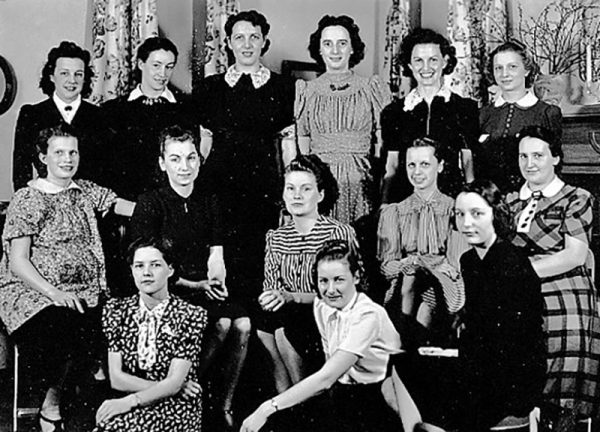
Tri-Chi – the three C’s encourage its members toward charm, character and culture. This Federated Club began officially on October 6, 1933, but many charter members spent their high school years together establishing a set of memories that would bond them together for the next 70 years.
Tri-Chi meetings were held the third Monday of every month from September through May with occasional beach parties planned during the summertime to accommodate growing friendships and growing families.
Lillian reminded me that one of the best entertainments for young people in the late ‘20s and early ‘30s was simply spending time with friends. Money was scarce and work was hard, so family and friends became the precious ingredient in “making your own fun.” World War I’s scars were fading, but the Great Depression was ripping into lives across Pulaski County and across America teaching the intrepid ones to bear up, brace up and save up.
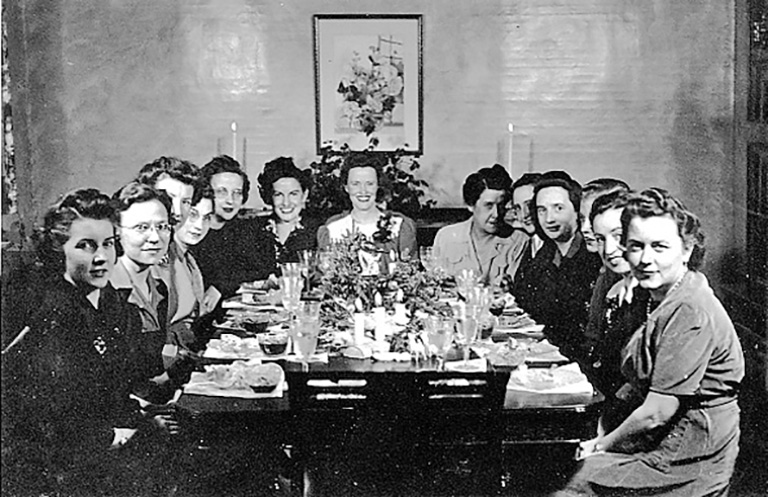
During these years, Lillian’s same high school friends met weekly, calling their get-togethers the “Play-Sew” Club. One week they would play cards or games, and the following week they would sew. A little fun, a little industry was the right mix for these young friends. At about the same time, the Indiana Federation of Clubs was collecting up charter members in communities across our state, helping organize the ambitions of such women into service-minded clubs. Tri-Chi, Women’s Clubs, Garden Club, Mother’s Club, Delta Sigma Tau, Lambda Phi, Lambda Sigma Chi and Little Women were Federated Clubs supported by women in our community for years.
Mrs. G. H. McCaskey, the wife of a Winamac physician, sponsored the Tri-Chi club and gave it the direction it needed. I wonder if she had any idea on that October evening in 1933 that she was guiding a club whose course would endure into the 21st century.
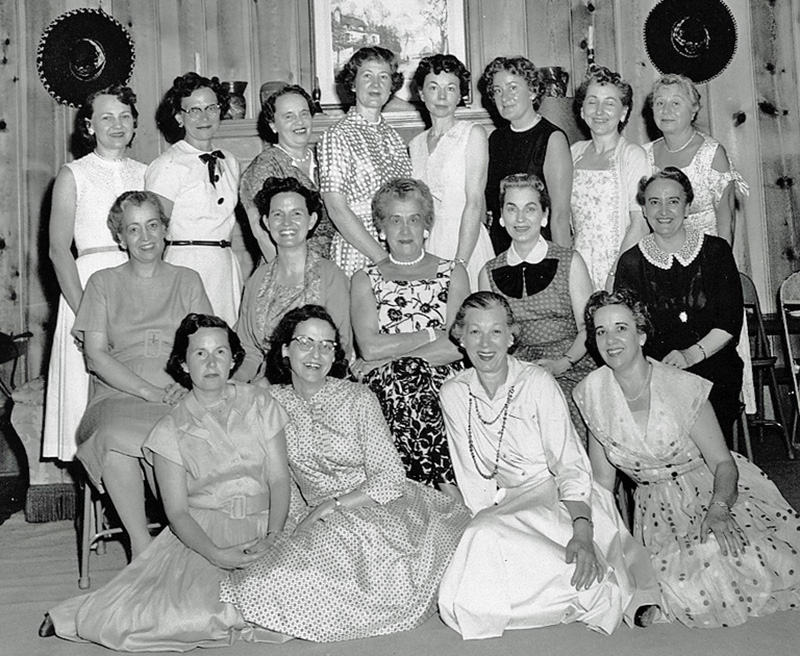
At club meetings, Tri-Chi’s would gather at one another’s homes for conversation, education, recreation and refreshment. Ask any Tri-Chi kid about their memories of “the week before Tri-Chi at Mom’s house” and I imagine they’ll be similar. Some fortunate ones could escape to grandma’s house relieving the pressure not to make a mess, but the unfortunates would get drafted into the scrubbing and polishing deemed necessary by the resident Tri-Chi to honor the Big Event.
It was a relief to be sent to their rooms once the invited Tri-Chi’s began arriving – and that not lightly said since nothing electronic awaited these kids in their rooms upstairs or down the hall. Sometimes if the neighbor’s window shade was up, if their TV set was on, if the binoculars were in their desk drawer and not in rooms downstairs, a Tri-Chi kid could watch the miracle-in-a-box from across the street.
Sometimes a great book or game awaited them and sometimes they just fell asleep early, exhausted by so much cleanliness.
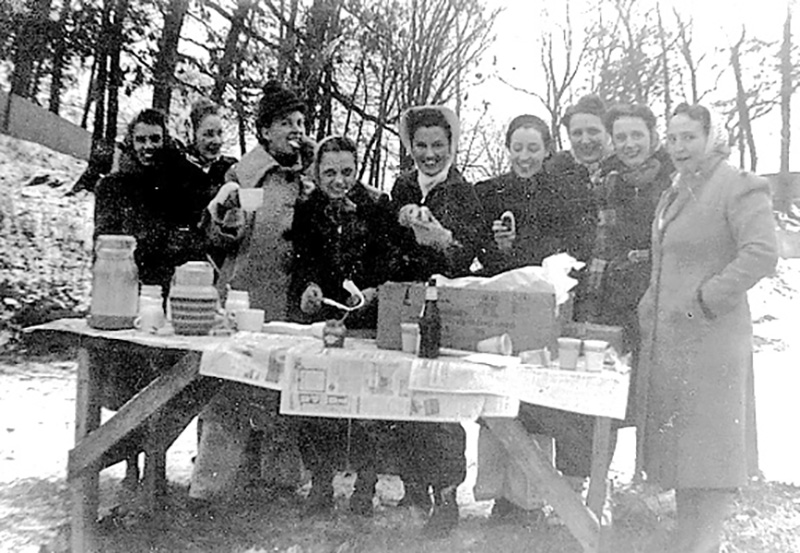
The meeting followed a yearly theme, such as 1942’s Developing Unity of Action Among Women, 1970’s The Pros and Cons of Certain Controversial Issues Concerning Our Society Today, and 1981’s A Touch of Genius.
Every month a book report would be given, and a topical research project shared supporting the year’s theme. Club members were encouraged to research historical, political, biographical, artistic and environmental issues pertaining to the selected theme.
Club business always came first, however; roll call, reading and approving minutes, treasurer’s reports and any necessary voting was completed before the evening continued. Refreshments were served and everyone would relax into friendly, familiar conversation before heading home to remove the current decade’s fashion discomfort: garters, girdles, clip-on earrings, big hair sprayed hard, pointy-toed spike-heeled pumps. Club night was not for the faint-hearted.
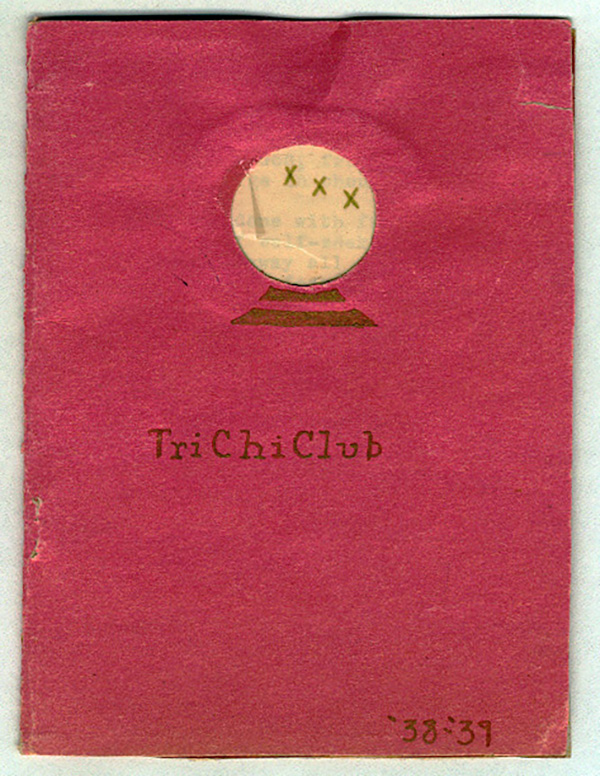
By 1937, the membership list grew to include Margaret Zellers, Janetta Underwood Stark, Monta Underwood Herd, Vada Turner, Helen Boyles, Dorothy James, Marceil Owen Kruger, Virginia Widup, Rachel Ackert, Thelma Fueman, Louise Robinson and Rosemary Holmes. The club’s flower was the lily-of-the-valley, their colors were green and white, and the annual club dues were 50 cents.
Mrs. McCaskey always hosted the December meeting in her home where she treated the Tri-Chi’s to a meal. They would gather at the candlelit table set with crystal, china, silver and fresh flowers and feel like princesses. Touched by her elegant hospitality and generosity, this December meeting became the high point of the club’s year until Mrs. McCaskey’s sudden death in 1961.
One of the real Tri-Chi treasures in my opinion, made its appearance in 1939 – the Tri-Chi scrapbook. I’m not sure if scrapbooking was a Federated Club thing, or whether the members realized they were on to a good thing and wanted to preserve the history, but 70 years of collected keepsaking is now bound up in two fat notebooks reinforced by some husband’s cast-off belts.
The books are a testimony to patience, thoroughness and devotion. Page after page provides samples of each year’s club program (the early ones hand-painted works of art), club photos (beautiful women with genuine smiles displaying character, charm and culture decade after decade), news clippings (meetings and charity events were reported in the Democrat), and the minutes of every meeting always read and approved. Seven decades of small town Hoosier living captured one month at a time.
Farrell Hoesel, Mary Charlotte Fritz, Gene Gast, Helen Hiatt and Dorothy Metz Housinger joined Tri-Chi in 1939.
Several annual events raised money for the Tri-Chi’s designated charities and service groups, the proceeds benefiting the Red Cross War Relief, the Boy Scouts, the Girl Scouts, the Infantile Paralysis Drive, Cancer Control Fund, Underprivileged Girls and Needy Mothers. In later years, they sponsored the Winamac Pool Fund, the Pulaski Memorial Hospital Fund, the American Heart Association, the Pulaski Developmental Services, the Brush-In at county elementary schools, and many others. They knitted afghans and scarves for soldiers during World War II and sent care packages to soldiers during the Korean and Vietnam wars.
The Charity Ice Carnival was held on Huddleston Pond in the early years. Admission was 15 cents for an individual and 25 cents per couple. Coffee was 5 cents and so were hotdogs. Awards were given for the fastest skaters in various age groups and for the winning hockey team. After one such carnival a memo in “The Book” stated “150 articles of baby clothing for needy mothers” were distributed.
Other interesting events were the Holly Happening bazaar, the Cancer Control Fund Dance featuring Del Tinkle and his band ($1.20 per person) and the Antique and Hobby Show held at the American Legion on North Franklin Street. Part of the show included an Antique Car Parade through Winamac with members dressing up in antique clothing to host the fun.
In 1942 Jane Marsh, Margie Shortle, Gladys Zellers and Velma Freeman joined Tri-Chi – the year our Tri-Chi’s program book won the Indianapolis Star’s club program competition. By 1947, Mary Charlotte (Fritz) Dilts, Jane Thompson, Peg Kocher Zanger, Dorothy Huddleston, Ann Critten, Ruby Taylor and Audra Little were Tri-Chi’s also.
So many of these names are familiar to me – like a significant list of some of the women who were involved in the Winamac I grew up in: 1951 – Helen Battenfield. 1956 – Lucy Wilson, Helen Herrin, Hazel Ruden, Alex Rice. 1961 – Doris Teyner, 1965 – Mrs. DC VanPelt, Mrs. Eugene VonToble, Thelma Stockdale, Mrs. Robert Hicks, 1973 – Edna Richter.
While they were sitting forward with their knees together, ankles crossed, hair done, earrings and lipstick on, gloves and purses nearby, they were also running farms and businesses, raising children without disposable anythings, caring for homes without the luxuries we call necessities, and supporting local schools and churches; as well as caring for aged parents, for handicapped children and despondent friends.
Throughout their decades, they buried spouses, children, parents, best friends and private dreams. They tried to exhibit the best of human nature while knowing the worst. They weren’t perfect, but they tried to do the right thing.
As of this writing (2003) in their 70th year, the Tri-Chi membership includes the last charter member, Lillian Zahrt, and four long-time members Lucy Wilson, Doris Teyner, Dorothy Housinger and Edna Richter. They still meet on their usual third Monday of the month, now at a restaurant for lunch, taking the summer months off as usual and skipping January and February as well. Since they all fit into one car, the driving Tri-Chi picks everyone up at the appointed time.
They resigned their Federated status in 1993 so they don’t have to bother with collecting dues and following club guidelines. The secretary has low vision and poor hearing, so the minutes have been discretely abandoned and rightly so since the meeting starts once the fifth Tri-Chi is safely in the car and ends after the last one hits her back porch.
The scrapbook committee still tucks away each year’s program book (witness the progression form typewritten to mimeographed to copy-machined to computer generated) and any interesting souvenir from the year’s outings. I am happy to report these “books” remain in the careful keeping of this dedicated committee of one.
The president graciously accepts her position every year as no one else wants to take it on, and as she is the driver to-and-from. Lillian sometimes wonders what they are doing, but I say just doing is more than enough.
Forget the Ya-Ya’s and give me the Tri-Chi’s!
(Editor’s update: Tri-Chi charter member Lillian Zahrt passed away in December 2010)